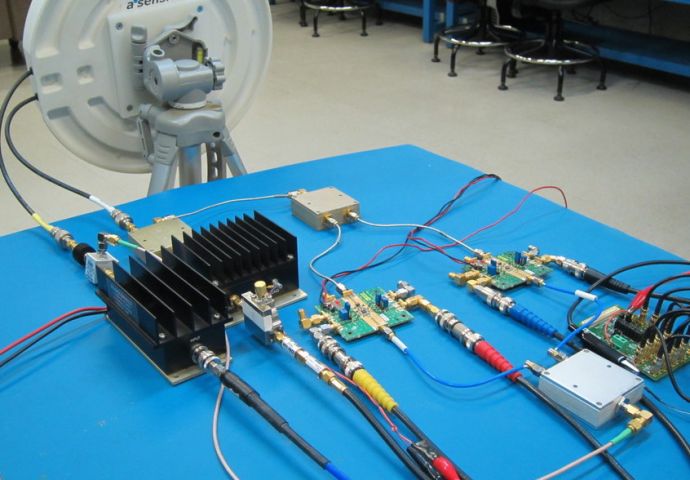
Engineers speed up wireless download times using ‘duplexing’
There are billions of cell phones in the world and everyone wants to maximize their wireless efficiency and improve their service.
Currently, cellular base stations are made up of “half duplex” radios that send and receive signals. However, they can only perform one of these functions at a time.
Many researchers have proposed the idea of a full duplex radio capable of sending and receiving on the same frequency simultaneously, a feat that could potentially double spectral efficiency. If this method was used in smartphones it would allow for simultaneous uploading and downloading. The problem with full duplex radios is that they also generate double the amount of interference, constraining their deployment.

Now researchers from New York University Tandon School of Engineering and Trinity College in Dublin, Ireland have developed a method to improve spectrum efficiency by deploying a mix of half and full duplex radios in base stations.
The team, led by Shivendra Panwar, professor of electrical and computer engineering at NYU Tandon, compares using a full duplex in a cellular network to being at crowded party and trying to talk and listen to everyone at the same time.
“Even if you were capable of speaking and listening at the same time, everyone around you would be doing the same thing,” said Panwar. “It would be impossible to tune out that extra noise, and the same is true in a full duplex system. There are many more outages and dropped calls due to the high level of interference.”
Since full duplex radio would be able to provide enhanced efficiency and half duplex radios provide a wider coverage area, the researchers wondered what would happen if they mixed the two. Combining full and half duplex cells could allow wireless providers to customize networks to meet demand and improve spectral efficiency as needed without excess interference.
To test their hypothesis, the team generated mathematical models of base stations with a variety of configurations of half and full duplex and ran simulations to predict the trade-offs in efficiency and coverage areas.
So far, according to the researchers, this is the first time a study has been conducted focusing on the impact of mixed-cell base stations on spectral efficiency and outages. Their models are available for wireless engineers seeking to improve their networks.
“The beauty of this system is that it’s tunable and would allow providers to adjust the mix of cells based on the needs of a region,” said Sanjay Goyal, a doctoral student who worked on the project. “If you’re designing an urban network, the demand for bandwidth is much greater than the need for wide-area coverage. More full duplex cells would provide that bandwidth, even at the cost of a few more dropped calls,” he explained. The reverse is true in less dense areas, where spectral efficiency is less crucial.
As an added bonus, since download traffic exceeds upload traffic on most networks (by a lot), the team demonstrated that a mixed-cell system could enable faster downloads at the expense of upload speed, which is less likely to be noticed by customers.

Comments are closed, but trackbacks and pingbacks are open.